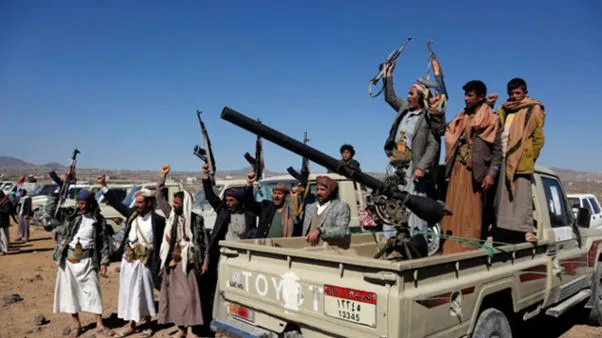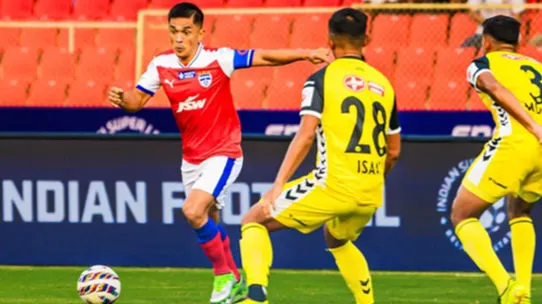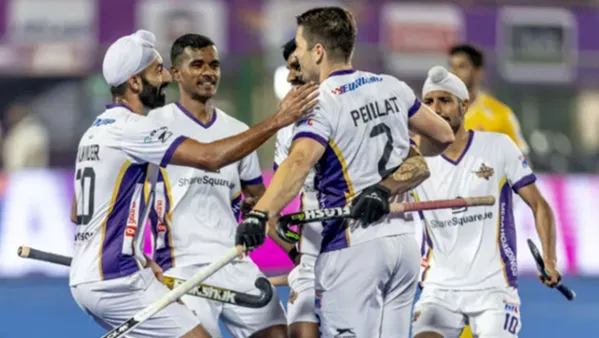Today, 3 December 2020, is when the Western Naval Command celebrates the Killers Nite. The Killers are a special breed of people posted on small powerful ships. Readers of this paper may recollect an article on the Killers in which I brought out the yeoman service rendered by these spirited boys. They have a great legacy to live up to and one they celebrate every year as the Killers Nite. This is the day they remember and commemorate the 1971 war when the daring missile boats attack on 4 and 8 December, codenamed Op Trident and Op Python respectively, marked a decisive turn in the battle at sea. And the Killer saga was born.

While 4 December has since been celebrated as Navy day with many official functions and receptions, the Killers Nite held on a suitable day in the Navy week is a more cosy and intimate affair where the personnel of the missile boat squadron get together. There is a rousing entertainment programme, a light and sound show depicting the attacks, the launch of Killers journal “First Strike” and felicitation of those officers and sailors who took part in the war. Every Killers Nite is also a poignant memory of the past as Father Time ticks, drawing many in its wake and leaving us with fewer stalwarts in the succeeding years. Thus, it is important to cherish our association and nourish those bonds as long as possible.

This year owing to the Covid pandemic, Killers Nite is being conducted in a scaled down manner, within the squadron and with no outside guests. Today, I am reminded of last year’s Killers Nite where I had the great privilege of meeting a 1971 war hero Commodore Inderjit Sharma (IJ from hereon). To my utter delight, I came to be seated next to him and the very elegant Rekha Sharma at the dinner table. As a navy historian, I was aware that IJ was the winner of Vir Chakra and, as the Commanding Officer of INS Nirghat, had fired the opening shots of the war. Yet it was like a fanboy moment when I got to meet and interact with him for long and ask him many aspects of the strike. I was humbled to find a grounded, simple man, speaking in a matter of fact manner. As he will not be there for the Killers Nite this year, here is a salute to icons like IJ and his compatriots who gave the Indian Navy its finest hour.

Op Trident and Op Python have been deeply etched in the memories of the nation and commemorated for five decades now. The exploits of the Indian Navy during the 1971 India-Pakistan War are ingrained not only in the collective memory of India, Pakistan and Bangladesh, but also the world at large. The missile attacks on the ships and at Karachi harbour and the subsequent burning of its oil fields for almost a week, was described as the biggest bonfire in the Arabian Sea, by then CNS, Admiral S.M. Nanda, in his autobiography, The Man Who Bombed Karachi.

While it was the vision of Admiral SM Nanda, coupled with meticulous planning at the Directorate of Naval Operations and the Western Naval Command that went a long way in ensuring victory, the field work and execution was the onerous responsibility of the missile boat squadron. Due credit needs to be given to the planners for their foresight, but the hosannas should be for the men behind the machines who plunged into hostile territory sans fear or reluctance. The attacks with the missile boats were novel; the young Indian Navy had little or no experience in using the boats to storm an enemy’s port – not just any port, but it’s citadel—Karachi. Do picture these bold men on the high seas in a tiny vessel, an enemy at the vanguard and beyond them, oblivion. The grit, the nerve, the meticulous planning that would have gone into the successful execution of what many thought of as ‘mission impossible’, leaves one with goosebumps.

The scale of devastation caused by the missile boats was unexpected, considered hitherto implausible and far reaching. History records that after the attack on 4 December Pakistan Navy (PN) withdrew ships inside harbour and after the 8th, ordered them to de-ammunition. Thus, effectively, the maritime war on the western front was over within five days of commencement of the hostilities. In fact, the spectre of missile attacks so much haunted PN that false alarms on 5th Dec resulted in abandonment of search for survivors and on 6 December resulted in PNS Zulfikar being strafed by its own Air Force.
Fifty years after the war, the technicalities may have become blurry in our consciousness but legends about the heroics remain engraved forever. And IJ was one such hero in the frontlines. Around mid-November, 1971, IN Ships Vidyut and Nirghat had been forward deployed at Okha, along with INS Tir. On the orders of Cdr Mahendra Pratap, CO Tir, the missile boats would patrol the harbour in search of spurious radar echoes, that would be common occurrence during winters. Whilst their search would turn out to be futile, the patrols served as good night training to sail in restricted waters under strong tidal conditions.
Then Lt Cdr I.J. Sharma, CO, INS Nirghat, recalls in Cmde Vijay Jerath’s book, 25 Missile Boat Squadron, “All of nature, the world and indeed our nation including myself, seemed to be in a state of blissful tranquillity and peace—it was the sunset of 3 December 1971. Yet, the envelope ensconced in the pocket of my battle jacket marked ‘TOP SECRET’ shattered this pseudo sense of security. This envelope spelt out the fate of many an adversary at the hands of this small but formidable missile boat and the thirty odd men under my Command. In my pocket were the orders for Operation Trident, the first ever Naval Operation in the Indian Ocean—in modern times; the first ever attack on the citadel and might of the enemy—Karachi. My thoughts shifted to my men. How would they take it—I wondered? The time had come to justify our existence in the armed forces. Would we do justice to the confidence reposed in us by our Navy and our nation?”
In retrospect, we can say they did full justice to the confidence reposed in them, as they sailed stealthily into what many would describe as a suicidal operation, given the proximity to the enemy’s den. They could have been bombed, once they were detected, from air, land as well as water. Yet, they dared and INS Nirghat fired two SS-N-2-Styx missiles at the first detected target—PNS Khaibar, a battle class destroyer, almost thrice its own size. To be hit and sunk by a missile boat was a rude awakening for Pakistan. In fact, their initial reaction was of being hit by air attacks as missile boat attacks were completely unexpected.
Some authors and historians see the Karachi attacks as a more than fitting revenge for Pakistan’s raid on Dwarka during the 1965 War, of which PNS Khaibar had been a part. While that endeavour did not amount to much except destroy some civilian buildings and kill a cow, the Indian Navy had been unfairly targeted by some citizens and media who were not aware that the Government of the day had constrained the Indian Navy from operating north of Porbandar. However, Senior Navy officers of that time were determined that should another opportunity arise, the Indian Navy would take the offensive and storm the enemy at her gates. Thus, when Khaibar was the first vessel to be sunk in 1971, it seemed like poetic justice. As Maj Gen Ian Cardozo (Retd), in his book ‘The Sinking of INS Khukri’ wrote “Dwarka, I think, was suitably avenged”.
To return to our protagonist, after carrying out thorough checks of Nirghat’s readiness for the attack, I.J. Sharma, had a passing thought, as recalled in the book, 25 Missile Boat Squadron, “My thoughts too diverted to Bombay and my family. We were going on a mission, which some classified as suicidal. Will I see them again? But this was not the time to indulge in negative thoughts. Without cluttering our minds, the time was to execute plans for which we had trained ourselves for many months. With that, I made my way back to the Bridge. Having received the report that the ship was ready in all respects to proceed to sea and for action, I waited for the clock to strike the exact time to sail and ordered the engines to be started.”
The steely resolve of the men onboard the missile boat coupled with the ingenuity of the planners finally bore fruit. Nirghat drew first blood during the 1971 War, setting the stage for the other missile boats of the Killer Squadron and subsequently for Op Python in the days to come. This decapitation on Western Front gave the necessary fillip required to create a blockade between West and East Pakistan. And that is a story known to many. But what about the man himself? Speaking to him last year, all I could elicit from the sprightly 84 years ‘young man’ were few stray comments here and there interspersed with questions about the navy of today. One memorable line was his cryptic remark “I hail from present day Pakistan, my ancestral village was near Lyallpur, I have grown up in Tandlianwala. I have often wanted to visit my birthplace. But I wonder if Pakistan would give me the visa if they knew I was the first one to start the naval war.”
To know more about him then we have to turn elsewhere. To a recent biography by his daughter Priya Sharma Shaikh called Jungee: A Warrior’s Journey. It is a finely crafted, detailed and affectionate look at her father’s life. And it is a remarkable narrative. About overcoming penury and adversity. About assimilating the Navy’s cosmopolitan culture while staying rooted to tradition. About his tender relationship with his wife Rekha. About fighting norms of patriarchy and orthodoxy while dealing with his own devils. But, above all, it is a fascinating story of the transformation of a small village boy into an extraordinary leader and warrior.
IJ joined Navy as a sailor in 1954 and by the dint of his hard work and determination qualified to be an officer, getting commissioned in September 1960. His contemporaries were the 16th course NDA which has produced distinguished officers like Adm Sushil Kumar, VAdm Avnish Tandon, VAdm Verghese Koithara, RAdm Raja Menon and RAdm SK Das among others. Das says of him “To me personally IJ is sheer warmth as a friend, a source of joy and inspiration and an example to emulate”.
IJ proved his mettle early on as Commanding Officer of INS Sharda, a small vessel meant for patrolling and curbing smuggling in the Palk Strait. The magnificent performance of IJ and his men during the super cyclone that hit Dhanushkodi in December 1964 earned them national acclaim. IJ acted on his own initiative when communication with naval authorities in Chennai (then Madras), broke down, navigated his ships through hazardous waters, ferried people continuously through stormy seas and rescued more than 3,000 people among the fishing community and others who had been struck by the cyclone. For his leadership and service, IJ was awarded the Ati Vishisht Seva Medal (AVSM) during the Republic Day honours in 1966 making him, possibly, the youngest recipient of the award, at less than 30 years.
Specialisation in Gunnery and selection for the prestigious command of INS Nirghat a few years later seemed like natural succession. Thus, it seemed destined when on the evening of 3 December, Cdr Khambatta, the Resident Naval officer in Okha handed over an envelope and told him “You should be proud to be part of independent India’s first offensive naval operation, the first ever attack on the fortress of the enemy’s strength—Karachi. This envelope spells death or glory for your men and you”.
That it was not death but glory alone, that Nirghat was the splendid opening act of a daring attack by the Indian Navy is now matter of history. The consequent award of Vir Chakra to IJ seemed a matter of course. The small ship of 30 people was awarded another Vir Chakra for the sailor who readied the missiles MN Singhal (Master Chief Electrical Artificer Power) and three ‘Mention in Despatches’. However, there is no doubt that the entire crew lived up to the ship’s motto ‘Dushmano Ka Nishchit Ghat, Nirghat Nirghat Nirghat’, which incidentally was carried forward by the next incarnation of Nirghat as well.
IJ carried on his distinguished service in various assignments before retiring prematurely as a Commodore in 1986. His sterling career was also embellished by his reputation as a good singer, as a yachtsman and as the leader of the Navy’s marching contingent on Republic Day 1975. The last development must have been particularly sweet considering that he was marked for special drill training when he joined the Navy. He continued his love for sea by doing almost a decade’s stint with Mazagon Docks Limited in shipbuilding and then in the private maritime sector before finally calling it a day.
IJ’s story is extraordinary for several reasons and at several levels. A boy whose ‘family was mercilessly driven out during partition coming back to decimate the pride of PN’ is very poetic but there are other—prosaic—reasons too. First, it is because we actually have this hero amidst us in flesh and blood, a real hero not the synthetic ones that our dream factories manufacture. Second, it is the story of indomitable determination of a person who was not fortune’s favoured child but took reverses in stride and stayed resolute at every step. Third, and most importantly, IJ represents the finest aspects of the Navy’s ecosystem—that it could recognise talent and groom him for leadership. A perfect example of this is that IJ, as a sailor on INS Mysore was the coxswain of the Captain (S.M. Nanda), who encouraged him to study and aim to become an officer. The fact that IJ, as an officer, many years later, played the opening act in Nanda’s grand design is testimony of destiny’s great hand.
In the early years of their marriage IJ was called ‘Jungee’ by his wife Rekha due to his combative, uncompromising, pugnacious nature. It was the same quality that stood Jungee in good stead when opportunity to make history presented itself. This is best seen in the small rousing speech he gave his men just few hours before the attack when he said “The Navy has trained us over the past two years and each of us has worked very hard to master our craft for this very moment. This operation’s success is in our hands, so when we fight let us fight with acuity, determination and courage”. It is precisely these attributes that defined Jungee.
Cmde Srikant Kesnur and Lt Cdr Divyajot are serving naval officers associated with the Naval History Project. While the article has been written as a first person account of the former it owes much to the research assistance of the latter. Views expressed are personal.
The photo credits are as follows: For the chart – Naval History Division, For others – Priya Sharma Shaikh






















